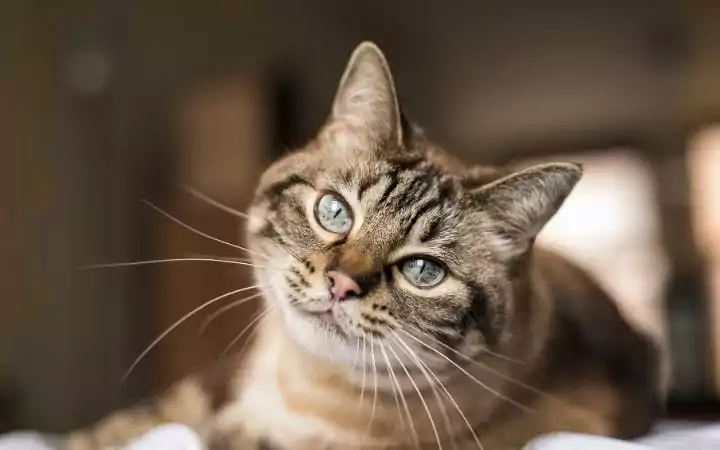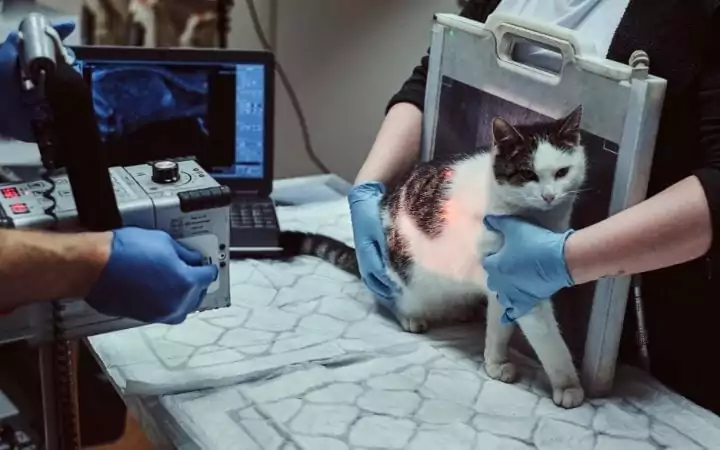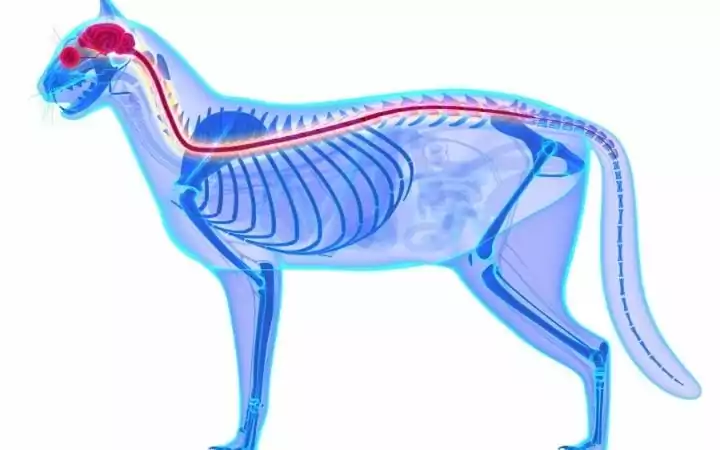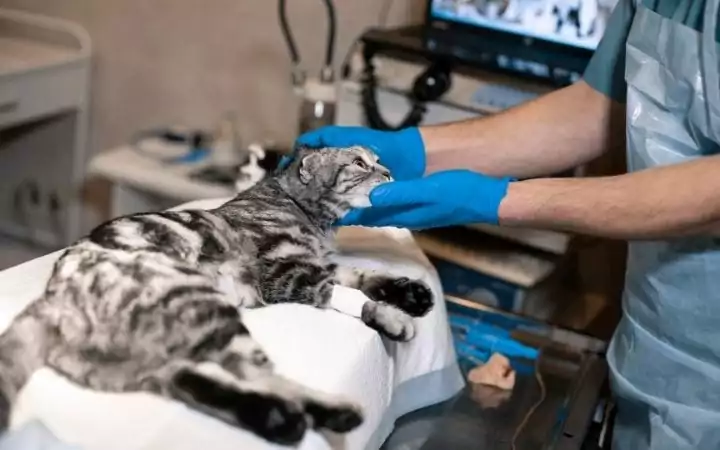Definition of Horner’s Syndrome in Cats
Facial drooping can be quite common and evident on a cat’s face. But what causes it? In this article, we discuss Horner’s Syndrome. Horner’s Syndrome occurs when the parasympathetic nerve becomes dysfunctional. This causes a snowball effect of clinical signs that, when grouped together, is known as Horner’s Syndrome. Read below to find out more information on it!
The Causes and Clinical Signs of Feline Horner’s Syndrome
It’s important to understand that Horner’s Syndrome is not a disease itself but a phenomenon that occurs when all clinical signs are present. These clinical signs include:
- Ptosis (unilateral drooping of the eyelid, on the affected side)
- Drooling
- Head tilt
- Ataxia (coordinance)
- Anisocoria (unequal pupil size)
- Miosis (constricted/smaller than usual pupil on the affected side)
- Protruding third eyelid
- Inflammation around the affected eye
- Enophthalmos (affected eye appears sunken in)
Horner’s Syndrome is caused mainly by trauma to the sympathetic nervous system. This can come from trauma to the neck, spinal cord, or head. It can be from blunt force trauma like being hit by a car, bite wounds from a fight, intervertebral disc disease, retrobulbar eye disease, tumors pressing on or damaging these areas, blood clots, or middle ear disease.

What are the Available Treatment Options?
Fortunately, it is less likely for cats to have idiopathic (unknown cause) Horner’s Syndrome and, therefore, easier to pinpoint a cause. Pinpointing the exact cause will determine your veterinarians’ course of treatment.
If the underlying cause is identified, then it’s vital that it is treated. In the meantime, your veterinarian will perform a list of diagnostic tests to rule out other diseases to possibly find what is causing this condition to occur. Tests include ear exams, CT scans, radiographs, neurological examination, physical examination with a thorough history, complete blood count, biochemistry profile, and urinalysis.
All of these tests will be performed, provided your cat is not in dire stress or facing life-threatening injuries. If your cat is your veterinarian will get him/her stable first, followed by testing. These tests will help identify what is going on with your cat.
A phenylephrine test can also be performed to locate sympathetic nerve damage. This test forces the pupil to dilate and measures how long it takes to return to its normal state. If it takes a long time, this is indicative of how far away the nerve damage is in proximity to the eye.
Eye drops are often prescribed to keep your cat’s eyes lubricated properly since their blink response is not working. The lubrication will help avoid corneal ulcers that are caused by your cat’s inability to blink. If your cat’s eye is staying dilated, then phenylephrine eye drops can be given to correct it. Of course, if there is a tumor that is pressing or causing inflammation to the nerve, then surgical removal may be an option.

Can any Other Ailments be Mistaken for Horner’s Syndrome?
It’s important to understand that Horner’s Syndrome is a group of particular clinical signs concurrently occurring and not a disease itself. That being said, some other ailments can be mistaken for Horner’s Syndrome. Ruling out all of these is essential when it comes to your cat’s prognosis and treatment going forward.
Severe inner ear infections can cause facial paralysis, as well as head tilt and ataxia. This is why it’s essential that your veterinarian performs a thorough ear evaluation. Severe dehydration can also cause your cat’s third eyelid to protrude. Two other disorders, Haw’s paralysis and Key-Gaskell syndrome (feline dysautonomia), also mimic the clinical signs of Horner’s Syndrome.
Haw’s paralysis is given its name because the third eyelid in horses is called the haw. It is a condition where the cause is unknown; however, it seems to be tied to inflammatory gastrointestinal disease. This paralysis results in both third eyelids being elevated. Key-Gaskell syndrome is a severe and rare disorder of the autonomic nervous system. Key-Gaskell syndrome shows clinical signs of dilated pupils, urinary retention, elevated third eyelids, and constipation.
What is the Sympathetic Nervous System?
Now, to fully understand why damage to it can lead to Horner’s Syndrome, we must understand what the sympathetic nervous system does. The sympathetic nervous system is responsible for the “flight or fight” response. If your cat is put in a bad situation, let’s say a catfight (haha) – their body will have involuntary responses.
Pupil dilation will allow them to see better; a quicker heart rate will pump more blood to enable them to react faster and muscle tensing, to name a few. The parasympathetic nervous system is what allows us to “rest and digest,” restoring the body back to its calm state and allowing for recuperation; when damage occurs to the sympathetic nervous system, the parasympathetic nervous system is forced to take over, resulting in the many clinical signs that make up Horner’s Syndrome.

The Three Orders of Lesions
The nerve pathway affected by Horner’s Syndrome is divided into three groups, First-order neurons, second-order neurons, and third-order neurons. These groups will help your veterinarian locate the area that is affected.
Locating which area of the sympathetic nervous system is an extremely important part of determining how much damage occurs. First-order neurons are affected by issues such as tumors, strokes, herniated intervertebral disease, and fibrocartilaginous embolisms.
Second-order neurons are affected when injuries or diseases occur in the trunk of your cat. For example, overstretching a cat’s arms, a chest tumor, or even pulling too hard on the leash resulting in a neck injury can cause a lesion to occur here.
Third-order lesions are associated with middle ear problems and vestibular disease. This is why your veterinarian needs to perform an ear exam. It also happens to be the most common type of lesion.
Prognosis and Recovery Rate of Horner’s Syndrome in Cats
The prognosis will depend on the underlying cause. If your cat needs surgery to remove a tumor, then the recovery rate will depend on how in-depth the surgery is. It’s important to follow and adhere to all instructions given by your veterinarian.
Sending the tumor out for a biopsy will also determine your cat’s prognosis. If the tumor is malignant and in the chest, the prognosis is poor to guarded. If the trauma was the underlying issue and your cat has no other problems, then the prognosis is most likely good. Sometimes the damage can be irreversible, but thankfully most of the time, it will resolve itself. However, it can take up to 16 weeks to fully resolve.

Summary
Determining the condition resulting in this phenomenon is extremely important. Through accurate testing, your veterinarian will be sure to get to the bottom of it. Between radiographs, MRI, and a thorough ear examination, the lesion location can be identified.
After it is appropriately located, treatment can be administered. It’s important to also treat the clinical signs of Horner’s syndrome to avoid any secondary issues. The more information available, the better when it comes to treating Horner’s syndrome.
Allowing your veterinarian to do what they need to locate the lesion will expedite the treatment your cat needs and help for a good prognosis. With proper diagnostics, time, and treatment, your kitty will hopefully be on its way to a speedy recovery.
